|

On eBay Now...
1920s US Vice President + Senator Charles Curtis Autograph Card For Sale

When you click on links to various merchants on this site and make a purchase, this can result in this site earning a commission. Affiliate programs and affiliations include, but are not limited to, the eBay Partner Network.

1920s US Vice President + Senator Charles Curtis Autograph Card:
$174.00
This 1920s US Vice President + Senator Charles Curtis Autograph Card is the exact item you will receive and has been certified Authentic by REM Fine Collectibles.Born onJanuary 25, 1860, in North Topeka, Kansas Territory, a year before Kansas was admitted as a state, Charles Curtis had three-eighths Native American ancestry and five-eighths European American ancestry.
His mother, Ellen Papin (also spelled Pappan), was Kaw, Osage, Potawatomi, and French. His father, Orren Curtis, was of English, Scots, and Welsh ancestry. On his mother's side, Curtis was a descendant of chief White Plume of the Kaw Nation and chief Pawhuska of the Osage.
Curtis's first words as an infant were in French and Kansa, both languages that he learned from his mother. She died in 1863, when he was 3 years old.
But he lived for some time thereafter with his maternal grandparents on the Kaw reservation and returned to them in later years. He learned to love racing horses and was later a highly successful jockey in prairie horse races.
After Curtis's mother died in 1863, his father remarried but soon divorced. During his Civil War service, Orren Curtis was captured and imprisoned. During that period, the toddler Charles was cared for by his maternal grandparents.
They also later helped him gain possession of his mother's land in North Topeka; under the Kaw matrilineal system, he inherited it from her. His father tried unsuccessfully to get control of that land. Orren Curtis married a third time and had a daughter, Theresa Permelia "Dolly" Curtis, who was born in 1866, after the end of the war.
On June 1, 1868, 100 Cheyenne warriors invaded the Kaw Reservation. The Kaw men painted their faces, donned regalia, and rode out on horseback to confront the Cheyenne.
The rival Indian warriors put on a display of superb horsemanship, accompanied with war cries and volleys of bullets and arrows. Terrified white settlers took refuge in nearby Council Grove.
After about four hours, the Cheyenne retired with a few stolen horses and a peace offering of coffee and sugar from the Council Grove merchants. No one had been injured on either side.
During the battle, Joe Jim, a Kaw interpreter, galloped 60 miles (97 km) to Topeka to seek assistance from the governor. Riding with Jim was the eight-year-old Charles Curtis, then nicknamed "Indian Charley."
Curtis re-enrolled in the Kaw Nation, which had been removed from Kansas to Indian Territory when he was in his teens. Curtis was strongly influenced by both sets of grandparents.
After living on the reservation with his maternal grandparents, M. Papin and Julie Gonville, he returned to the city of Topeka. There, he lived with his paternal grandparents while he attended Topeka High School. Both grandmothers encouraged his education.
Curtis read law in an established firm, where he worked part time. He was admitted to the bar in 1881 and began his practice in Topeka. He served as prosecuting attorney of Shawnee County, Kansas, from 1885 to 1889.
Based on his personal experience, Curtis believed that Native Americans could benefit from mainstream education and assimilation. He entered political life when he was 32 years old and won several terms from his district in Topeka, Kansas, beginning in 1892 as a Republican to the U.S. House of Representatives.
There, he sponsored and helped pass the Curtis Act of 1898, which extended the Dawes Act to the Five Civilized Tribes of Indian Territory. Despite Curtis being unhappy with the final version of it, implementation of the Act completed the ending of tribal land titles in Indian Territory and prepared the larger territory to be admitted as the State of Oklahoma, which occurred in 1907. The government tried to encourage Indians to accept individual citizenship and lands and to take up European-American culture.
Curtis was elected to the U.S. Senate first by the Kansas Legislature in 1906 and then by popular vote in 1914, 1920, and 1926. Curtis served one six-year term from 1907 to 1913 and then most of three terms from 1915 to 1929, when he was elected as vice-president.
His long popularity and connections in Kansas and federal politics helped make Curtis a strong leader in the Senate. He marshaled support to be elected as Republican Whip from 1915 to 1924 and then as Senate Majority Leader from 1924 to 1929. In those positions, he was instrumental in managing legislation and in accomplishing Republican national goals.
Curtis ran for vice president alongside Herbert Hoover for president in 1928—winning a landslide victory. In 1932, he became the first United States vice president to open the Olympic Games.
However, when Curtis and Hoover ran together again in 1932 during the Great Depression, they lost as the public gave the Democrats Franklin D. Roosevelt and John Nance Garner a landslide victory that year. Curtis remains the highest-ranking enrolled Native American who ever served in the federal government.
He is also the most recent officer of the executive branch to have been born in a territory, rather than a state or federal district. He remained the only mixed-race vice president in American history until the inauguration of Kamala Harris in 2021.
Although Hoover gave few speeches during the 1928 presidential campaign, Curtis traveled coast to coast and spoke almost every day.
While covering the convention, H. L. Mencken described Curtis as "the Kansas comic character, who is half Indian and half windmill. Charlie ran against Hoover with great energy, and let fly some very embarrassing truths about him.
But when the Hoover managers threw Charlie the Vice-Presidency as a solatium, he shut up instantly, and a few days later he was hymning his late bugaboo as the greatest statesman since Pericles."
The Hoover–Curtis ticket won the 1928 presidential election in a landslide by receiving 444 out of the 531 Electoral College votes and 58.2% of the popular vote. Curtis resigned from the Senate the day before he was sworn in as vice-president.
After he took the oath of office in the Senate Chamber, the presidential party proceeded to the East Portico of the U.S. Capitol for Hoover's inauguration. Curtis arranged for a Native American jazz band to perform at the inauguration.
Curtis's election as vice president made history because he was the only native Kansan, the only Native American, and the first non-European to hold the post.
The first person enrolled in a Native American tribe to be elected to such a high office, Curtis decorated his office with Native American artifacts and posed for pictures wearing Indian headdresses. He was 69 years old when he took office, which made him the oldest incoming vice-president at the time.
Curtis was the first vice-president to take the oath of office on a Bible in the same manner as the President. Curtis named Lola M. Williams as private secretary to the vice-president, and Williams was one of the first women to enter the Senate floor, which was traditionally a male monopoly.
Soon after the Great Depression began, Curtis had endorsed the five-day work week with no reduction in wages as a work-sharing solution to unemployment.
In October 1930, in the middle of the campaign for 1930 midterm elections, Curtis made an offhand remark that "good times are just around the corner". The statement was later erroneously attributed to Hoover and became a "lethal political boomerang."
At the 1932 Republican National Convention, Hoover was renominated almost unanimously. Curtis failed to secure a majority of votes on the first ballot for the vice-presidential nomination. He received 559.25 out of 1,154 votes (or 48.5%), with Generals Hanford MacNider (15.8%) and James Harbord (14.0%) being his nearest contenders.
On the second ballot, the Pennsylvania delegation shifted its votes to Curtis from Edward Martin, which gave him 634.25 votes (54.9%) and secured him the nomination for the second time.
Curtis opened the 1932 Summer Olympics in Los Angeles and so became the first U.S. executive branch officer to open the Olympic Games.
Following the stock market crash in 1929, the problems of the Great Depression deepened during the Hoover administration and resulted in the defeat of the Republican ticket in 1932. The Democrat Franklin D. Roosevelt was elected in 1932 as president, with a popular vote of 57% to 40%.
Curtis's term as vice president ended on March 4, 1933. Curtis's final duty as vice president was to administer the oath of office to his successor, John Nance Garner, whose swearing-in ceremony was the last to take place in the Senate Chamber.

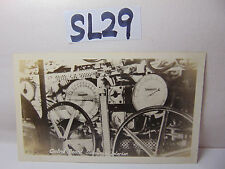
VINTAGE 1920'S US NAVY PICTURE POSTCARD CONTROL BOARD SUBMARINE INTERIOR SUB C39 $39.99
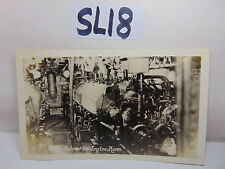
VINTAGE 1920'S US NAVY PICTURE POSTCARD SUBMARINE SUB ENGINE ROOM UNUSED RARE $35.99

VINTAGE 1920'S US NAVY PICTURE POSTCARD SUBMARINE SUB V-2 COMING UP SURFACING $35.99

VINTAGE 1920'S US NAVY PICTURE POSTCARD SUBMARINE SUB V-TYPE FLEET DESTROYER SZ. $35.99
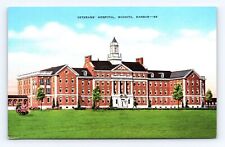
Old Postcard US Veterans Hospital Wichita Kansas 1910's 1920s $4.48
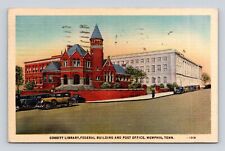
Old Postcard US Post Office Customs House Building Key West FL 1920s Antique $9.99
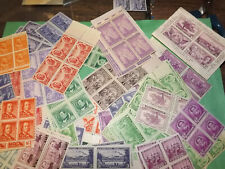
5 x US Postage Stamps Blocks 1920s-1940s MNH UNUSED 80-100 years old $9.99

c1920's US Mint 17th & Spring Garden Streets Philadelphia Pennsylvania Postcard $19.95
|